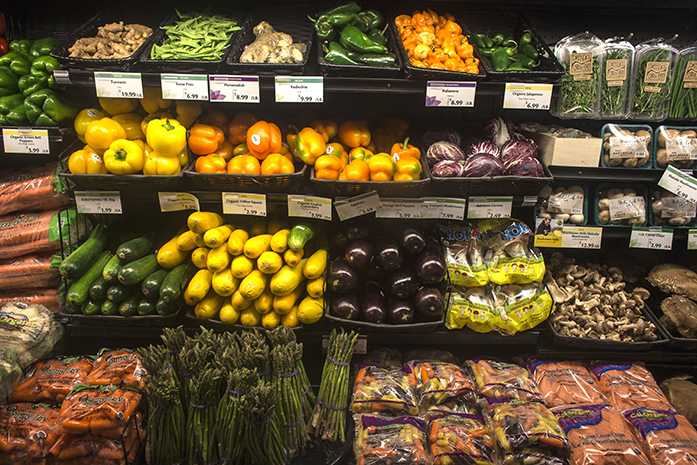By Naomi Hofferber
2017 might see the first increase in the use of food stamps in years, according to officials.
However, many who need the support still do not qualify for it.
The years following the recession saw a decrease each year in those using food stamps through the Supplemental Nutrition Assistance Program as individuals became ineligible for the program, said Amy McCoy, the public-information officer for the Iowa Department of Health Services.
“You had more eligibility to be on the SNAP program during [the recession],” McCoy said. “When the [American Recovery and Reinvestment Act signed by former President Barack Obama in 2009] went away, you would’ve seen some of that decrease. We estimate that we will see a small uptick in use of the SNAP program in 2017.”
The American Recovery and Reinvestment Act sought to create new jobs during economic troubles by cutting taxes and investing in several industries.
To qualify for SNAP, individuals must have an income below 160 percent of the national poverty line. According to 2015 data, Feeding America estimates that 46 percent of food-insecure Iowans do not qualify for SNAP, and 38 percent do not qualify for any other supplemental programs.
“Food insecure” is defined as reduced quality, variety, or desirability of one’s diet by the U.S. Department of Agriculture.
In Johnson County alone, 45 percent of food-insecure residents had too high an income to qualify for SNAP in 2015.
RELATED: Market Money finds a home
“What we have seen statewide is since 2008, which was a peak in food insecurity in Iowa, the numbers have come down, but they have not come down significantly,” said Danny Akright, the communications manager for the Food Bank of Iowa.
Akright said around 2008 and 2009, approximately 14 percent of Iowans were food insecure. That number now sits at about 12 percent.
“You would think that with the recession getting much better and unemployment calming down, things should be in a better shape,” he said.
Akright cited stagnant wages and medical costs as two major factors that can push families and individuals into food insecurity.
“Even if someone is making above the [poverty] line for SNAP or any other food program, they may still struggle to buy food,” Akright said. “That arbitrary line that exists for SNAP and other programs does not necessarily reflect the accurate situation that food-insecure Iowans are in.”
McCoy said there are approximately 400,000 Iowans in SNAP.
“Household income can’t exceed more than 160 percent of the federal poverty level — that’s for a family of three — so that’s only about $31,000 a year to qualify for SNAP,” she said. “You can imagine families in that group above that, that’s still not a very high income.”
While there is a gap of those food-insecure and those who can receive government benefits, local food pantries can assist in making up the difference.
Sara Benson Witry, the Food Bank and emergency-assistance director for the Crisis Center of Johnson County, said the organization has seen a slight increase in demand for the food aid in the past year.
“What we’re seeing is that for a couple of years after the recession, it seemed like people’s needs were stabilizing a little bit more, and we even saw a couple of years of a very slight decrease in demand,” Witry said. “But then this past year that just ended, we saw an increase in demand.”
Witry said the Crisis Center has seen the most increase — not in the number of people coming but in the pounds of food being taken.
“Families were visiting more often and also taking more food per visit than they took previously,” she said. “This year it was over 30 pounds per visit.”
The Food Bank does not have a financial requirement for individuals to take food — they just need to live in Johnson County.
“We know that the formulas and designations of what qualifies as low income and what other programs qualify as needy don’t always take in the whole picture,” Witry said.



